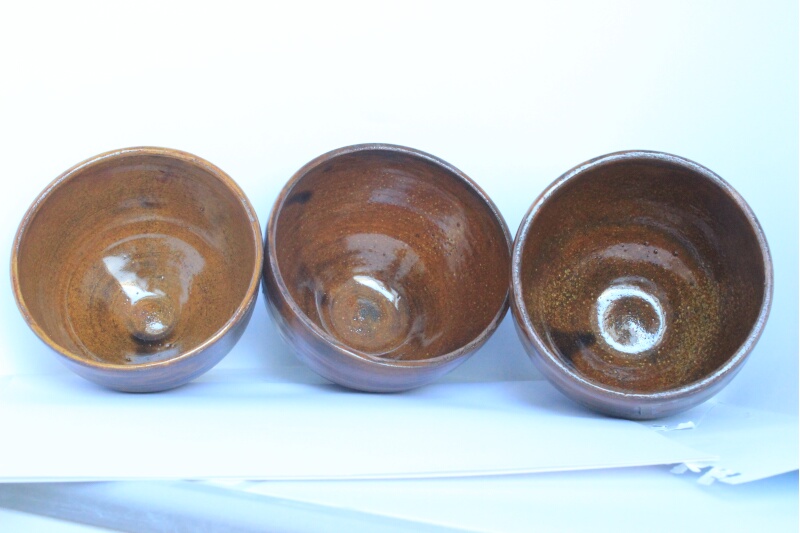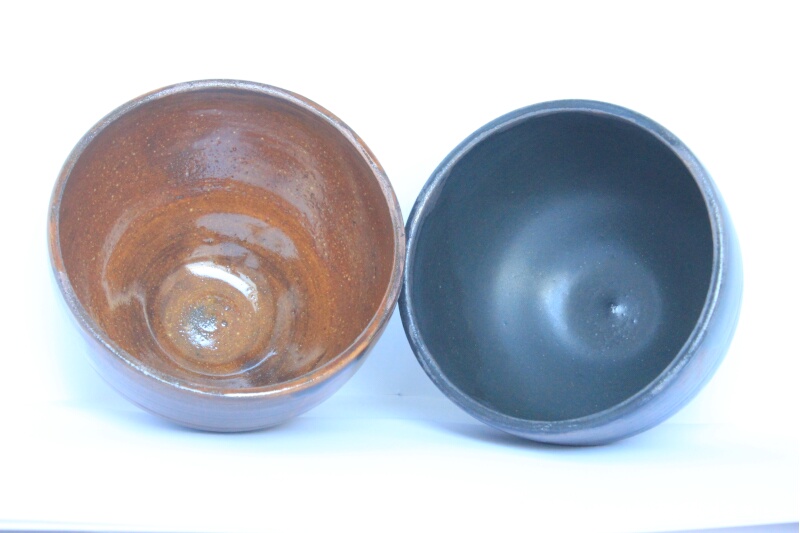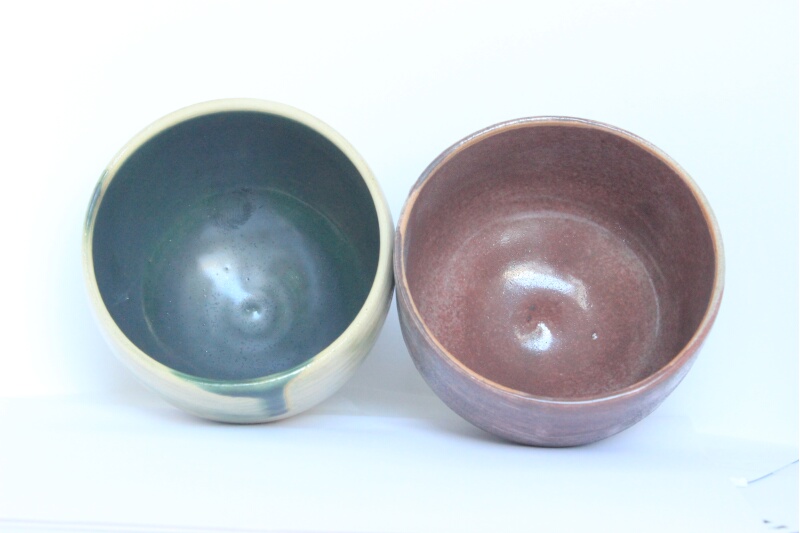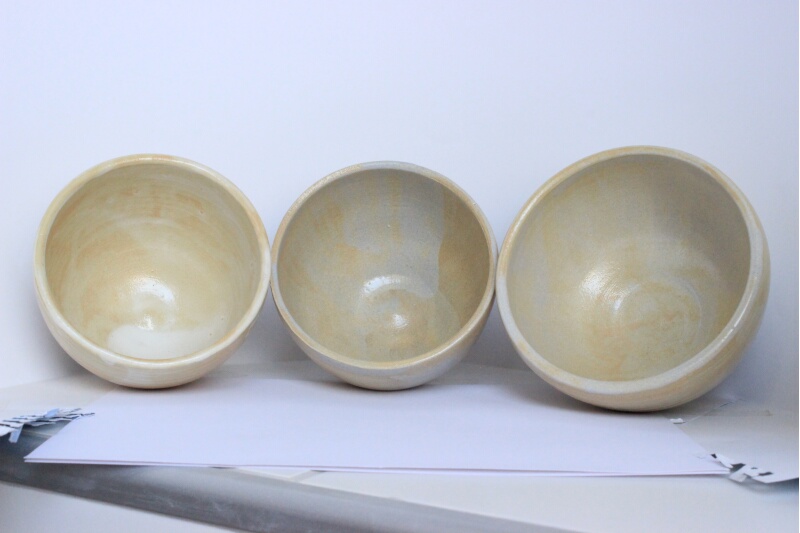Gustav Weiß describes on his page in the internet a possibility to create glazes for the electrical kiln (oxygene atmosphere), that show an “inner reduction” without changing the kilns atmosphere.
The principle is rather simple: Silicium, added to the glaze, will absorb the oxygene from the metal oxides in the melt and the desired reduction colors will appear. As Mr. Weiß recommends, I tried this for copper oxide, iron oxide and titanium oxide.
Iron Oxide
Picture 1: Pure (left) and with silicium (middle)

Picture 2: Iron oxide with silicium addition in the electrical kiln (left) and under reduction atmosphere in a sagger (right)

Copper Oxide
Picture 3: Pure (left) and with silicium (middle)

Picture 4: Copper oxide with silicium addition in the electrical kiln (left) and under reduction atmosphere in a sagger (right)

Titanium Oxide
Picture 5: Pure (left) and with silicium (middle)

Picture 6: Titanium oxide with silicium addition in the electrical kiln (left) and under reduction atmosphere in a sagger (right)

Titanium oxide does in deed show a transition of the glaze color from yellow to blue under reduction conditions. Eventually, the slicium amount could be increase further.
Copper oxide and iron oxide do not show inner reduction in this experiment but this might change with more silicium addition.
All experiments have been performed at 1220°C, this is the lower border of my stoneware glaze. The temperature was selected to keep the melt phase as short as possible in order to avoid re-oxidation. No holding-time was programmed. As the glaze has melted, the temperature should have been reached. For control purposes the pure glaze was also fired in the kiln and in the sagger (reduced) as a reference.
Related posts:
A new porcelain and clay body Markus Böhm has developed a new porcelain body especially for usage i...
This post will show pictures of a Nuka glaze with extra iron, American Shino, Pier Black, Haystack O...
Chawan 4586 Hello, I plan to show periodically some of the products for sale in more details. Toda...
One comment